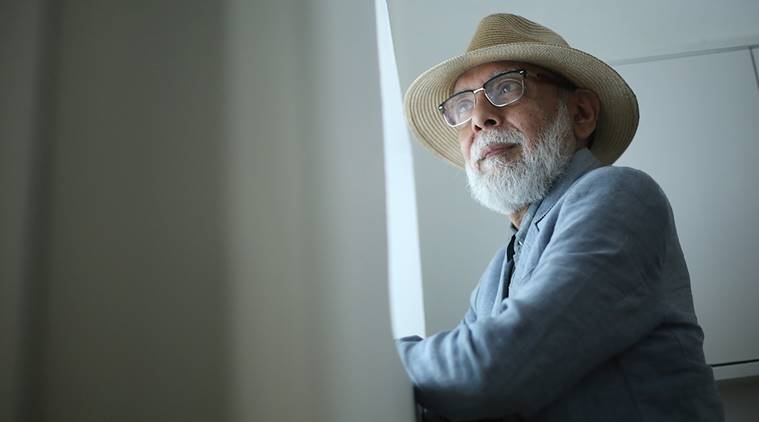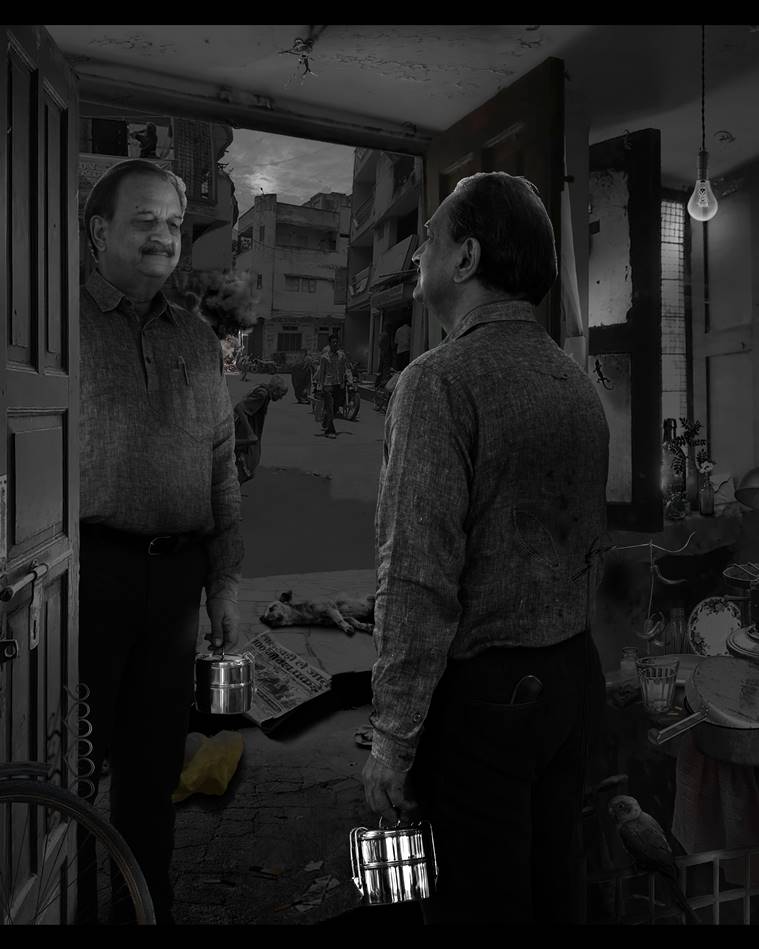
In your new exhibition we see a lot of images that seem to emerge in the aftermath of fear and violence. Are these a reflection of the present times?
The question to ask is where does a work of art come from? It comes from lived life, from what impacts you. It takes from art history, cinema, literature, poetry, theatre or even stories told by people. I don’t think there ever really were good old times. That’s why in some great literature and works of art, darkness has been a crucial source. It also comes from the possibility of redemption, because one can’t live entirely with darkness, and, if one could, one wouldn’t be self-reflective when making art. In “Fear Of A New Dawn” (at Vadehra Art Gallery, till April 6), one awakens to a sense of fear. The video installation Not Anonymous_Waking to the Fear of a New Dawn is in black and white and when everything disappears in a landscape charred by flames, we see a tiny green sapling on the edge of the installation swaying in the breeze. The current political situation and the events in the recent past have affected us deeply. I remember, as a student in London, one of my professors was looking at an oil painting of a hellscape by another student. My professor asked him if his painted image frightened him, and said that if it didn’t, it was stupid to paint it. So, the fear has to happen to you. The urge to make the work has to come from within the artist.
I believe you started drawing at the age of three or four with coal that was used in the haveli in Patiala where you grew up.
There used to be a lot of coal in the house for fuel and I would use that to draw on walls and on floors. I drew things that I saw in the haveli — tractors, bicycles, animals, dancing women, etc. I used to draw a lot of donkeys. My family owned a brick kiln and my uncle would take me there. I would look at the donkeys stand in line, wait for their turn and carry off sacks of clay bricks. They knew where to stop for unloading before returning for the next load. My uncle once commented on how intelligent they were, how they helped build towns and cities that became great civilisations. To me, they seemed to be mistreated. In one of the works in this exhibition, we see the severed head of a donkey which bleeds every time some innocent unwary victim falls to random but insidiously fired arrows. I am working on another mechanised sculptural work with the donkey as a protagonist.
You take a long time to create a work. In an interview, you mentioned how this is a result of your childhood when you had ample time to contemplate.
As a child, I hardly stepped out of the haveli. We were a small family — my parents, brother, grandmother and two uncles — but it never felt that time was stretched. I never felt bored. One can think of it as ‘slow time’, a time that allowed for contemplation. Even as a student of art, I would take up to a year to finish a work. For me, it is about getting it right. I don’t have to make many works, it’s fulfilling when the work gets closer to how I want it to be. I work with a lot of preliminary material — sketches, research and reference material — and, in my video and digital works, I do not start until I find the right people to be my protagonists.
You started thinking about combining painting and video in the late ’80s but the first work, Man Threading a Needle, came only in 1998. What took you so long?
I was deeply interested in looking at paintings and I could spend hours with a single work of the masters. Similarly, I was totally fascinated by cinema. I wanted to combine both and yet keep them separate. I wanted to play with how time sits in both painting and video. Combining the two allowed me to work with the substantial — the physical body of a painting — and the unsubstantial — cinematic image, made of light. Video allowed me to break the frame of the canvas; the figures could literally walk out of the painting and on to the wall. There was an immense tonal range that I could have as my palette, from the blackness of the painted pigment to the white brightness of the video projection. I showed Man Threading Needle at the British Council. By then, I was so clear about the medium that making it was effortless. When one says of some kind of art that ‘this looks difficult’, it means you need to be longer with it. You have to reach a state of ease with the medium.
You also co-founded the Patiala Film Society in the ’70s.
I was 23 then. I had just completed my graduation from Chandigarh and was teaching art at the Patiala Women’s College. A few friends and I decided to screen films. We had a small projector and were registered on the circuit of the Indian Film Society. One of us would travel to the embassies in Delhi to get films. It is difficult to explain precisely how that exposure impacted my work, but films and literature do rewire your head. I feel my video practice comes less from the history of video and more from the history of cinema.

You were active in theatre, too. You taught at the Delhi College of Art in the early ’80s. What were those years like?
There were people I knew who were doing theatre, and I devised annual theatrical performances in my school in Patiala. The five years I taught in Delhi were extremely fulfilling. I had several older friends such as Krishen Khanna and J Swaminathan who would drop in to look at my work. (VS) Gaitonde was a neighbour. Vivan Sundaram, the Baroda artists as well as other Bombay artists were friends, most of them due to the Kasauli artist camps organised by Vivan, where everything from cinema, theatre, literature to music was discussed. Manjit Bawa was a close friend. Tyeb Mehta was very inspiring. This is also the time when (Sufi singer) Madan Gopal Singh introduced me to (filmmaker) Mani Kaul, and the three of us would often meet. I feel people don’t meet as much these days. In fact, I remember I was still in Patiala when I had written a few scripts that I shared with Kumar Shahani, and he asked me to send them to Akbar Padamsee, who had been working with video art. When I did, Akbar asked me to come to Mumbai. I never went, but we interacted later. Three months ago, I heard from him that while archiving his works he found a letter I had written in the late ’70s.
A lot of your early work was in monochrome. Was there any particular reason for it?
(Henri) Matisse had said, drawing is our observation of the world and colour is an emotional response to it, which means it can emotionally take you somewhere you did not want to go. I don’t use colour unless it is necessary, not only in painting but also in my sculptural and video works. Though, when I went to England, all the paintings became very colourful for a period of time. I was interested in kitsch and I pushed the colours to the edge before they became too garish to bear.